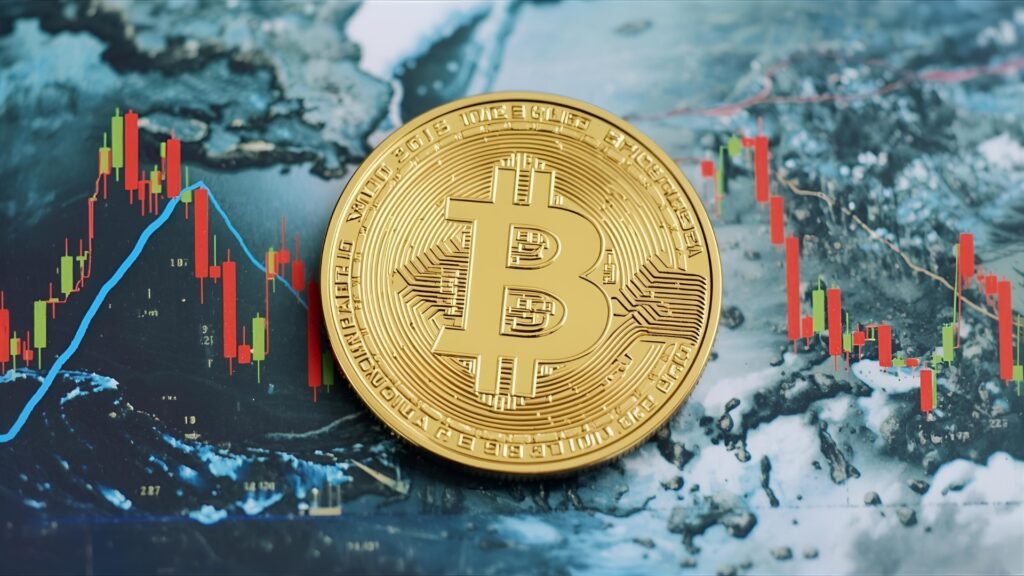The current price of Bitcoin is more than a number flashing on a chart. It’s a living snapshot of how global investors, miners, institutions, and everyday savers value the world’s first decentralized digital asset right now. Whether you’re a seasoned trader or a curious beginner, grasping what pushes the current price of bitcoin up or down can help you read the market with confidence.
Manage risk, and avoid costly mistakes. In this guide, you’ll learn how supply and demand dynamics, macroeconomic signals, crypto-native news, technical patterns, and on-chain fundamentals combine to shape the current price of bitcoin. You’ll also discover how to analyze BTC price today, how to interpret market sentiment, and where to find reliable data without drowning in noise. By the end, you won’t just watch the current price of bitcoin move—you’ll understand the story behind every move.
What “Current Price of Bitcoin” Really Means
When analysts talk about the current price of bitcoin, they typically mean the last traded price on a major exchange. Because bitcoin trades 24/7 across hundreds of venues, tiny differences exist between platforms, yet the overall market keeps prices in tight alignment through arbitrage.
In practice, your “bitcoin price now” reflects the most recent transaction between a willing buyer and seller. That single print rolls up the market’s expectations about inflation, interest rates, liquidity, adoption trends, regulatory headlines, and even crypto-specific events like Bitcoin halving cycles. Understanding the forces behind that quote is crucial for any strategy, from dollar-cost averaging to active trading.
The Core Drivers Behind the Current Price of Bitcoin
Macroeconomics: Rates, Liquidity, and Risk Appetite
The current price of bitcoin is tightly linked to the broader macro backdrop. When central banks raise interest rates to cool inflation, risk assets often reprice. Higher yields on cash and bonds can reduce demand for speculative exposure, and BTC price today may soften as investors rotate toward safer income streams. Conversely, when liquidity expands—through rate cuts, quantitative easing, or improving growth prospects—risk appetite tends to rise. In those conditions, capital often flows back into assets with asymmetric upside, including bitcoin.
The U.S. dollar also matters. A strong dollar can pressure commodities and risk assets, while a weaker dollar may buoy them. Because bitcoin trades globally, currency moves influence how non-USD investors experience the current price of bitcoin, shaping flows across regions.
Regulation: Headlines That Move the Tape
Regulatory clarity can energize the market; uncertainty can weigh on it. Policies affecting exchanges, stablecoins, ETFs, custody, and taxation all filter into the current price of bitcoin. Positive developments—such as permissive guidance for institutional.
Products or clearer compliance pathways often attract fresh capital. Conversely, restrictive rules or enforcement actions can spark sell-offs. These headlines act quickly, so traders closely monitor official statements and court decisions that may change access, leverage, or investor confidence.
Adoption and Utility: The Network Effect

Bitcoin’s value proposition grows with adoption. Each new cohort—retail savers, fintech apps, treasuries, family offices, or nation-state entities—adds incremental demand and deepens liquidity. As more people hold bitcoin as a store of value,
accept it for payments, or use it as collateral, the current price of bitcoin can reflect higher long-term expectations. Integrations with payment platforms, custody enhancements, and rails that make transfers cheaper or faster contribute to this trend. The story of Bitcoin is, fundamentally, a story of network effects.
Supply Mechanics: Halving and Miner Economics
Bitcoin’s supply schedule is transparent: approximately every four years, the block subsidy halves. This Bitcoin halving reduces the flow of new coins entering the market, often tightening the supply overhang. Miners must periodically sell a portion of their rewards to cover operating costs,
so changing revenues affects selling pressure. After a halving, miners sometimes become more selective about liquidations, which can influence the current price of bitcoin—especially if new demand arrives at the same time.
Sentiment and Narrative Cycles
The crypto market runs on narrative. Bullish storylines—such as rising institutional participation, spot bitcoin ETFs, or macro hedging—can pull in momentum buyers and lift the current price of bitcoin. Bearish storylines—exchange hacks. Insolvencies, or policy crackdowns, can produce rapid drawdowns as traders rush to reduce exposure. Sentiment oscillates, and understanding where we are in the fear and greed spectrum helps frame risk.
How to Read the Current Price of Bitcoin Like a Pro
Price Feeds vs. Aggregators: Getting Clean Data
Not all data is equal. Single-exchange quotes are useful, but price aggregators smooth out small discrepancies and offer a robust view of the current price of bitcoin. Many aggregators provide depth-of-market snapshots, funding rates, and derivatives metrics.
If you’re building a routine, pick two or three trusted sources and compare them. Over time, you’ll learn which platforms reflect moves fastest, which add meaningful on-chain analytics, and which are best for historical charts.
Spot vs. Derivatives: Two Markets, One Signal
The spot market shows cash buying and selling; the derivatives market reflects expectations. When perpetual futures funding rates turn strongly positive, it often signals euphoric long positioning; negative rates can indicate bearish sentiment or demand for hedging.
Watching how derivatives behave relative to spot helps decode whether a rally is powered by genuine accumulation or mostly leverage. This context adds depth to the current price of bitcoin and can warn you of potential squeeze conditions.
Technical Analysis: Structure, Momentum, and Levels
Price is the final arbiter, and technical analysis (TA) translates price action into structure. Traders track support and resistance, moving averages, RSI, MACD, and volume profiles to gauge trend strength. When the current price of bitcoin breaks above long-respected resistance on rising volume,
It can attract breakout buyers. Conversely, repeated failures at a key level may suggest distribution. TA doesn’t predict the future; it organizes risk. Use it to plan entries, exits, and invalidation points rather than to chase every candle.
On-Chain Metrics: Unique to Crypto
Unlike traditional markets, bitcoin provides a wealth of on-chain data—transaction throughput, active addresses, realized price, exchange inflows and outflows, and long-term holder supply. If long-term holders are accumulating while exchange balances fall,
Supply available for sale may be shrinking. If coins rush to exchanges, it may hint at near-term sell pressure. Pairing on-chain signals with TA and macro helps you contextualize the current price of Bitcoin with unusual granularity.
News, Narrative, and the Price You See

Separating Signal From Noise
Crypto produces an endless scroll of rumors, airdrops, forks, exploits, and protocol upgrades. Build a filter. Follow a small set of credible analysts, developers, and data providers. When a headline hits, ask three questions: Does it change demand? Does it change supply? Does it change access/liquidity? If the answer is yes to any, the current price of Bitcoin may react meaningfully. If not, it’s probably noise and you can stick to your plan.
Seasonality and the Halving Cycle
Market participants often observe patterns around Bitcoin halving events. While past performance doesn’t guarantee future results, reduced issuance can recalibrate supply dynamics. Combine this with macro cycles: expanding liquidity, adoption milestones, and institutional flows can align with—or overwhelm—halving narratives. Use history as context, not prophecy, when assessing the current price of bitcoin.
Practical Ways to Track the Current Price of Bitcoin
Build a Simple Daily Routine
Start with a quick dashboard: one price aggregator, one derivatives overview (funding, open interest), one on-chain glance (exchange flows, active addresses). In five minutes, you’ll see whether the current price of bitcoin is drifting, trending, or reacting to news. Next, skim reliable news feeds for regulatory or institutional updates. Finally, mark key technical levels on your chart. This routine prevents impulsive decisions and gives you a repeatable framework.
Avoid Common Pitfalls
Over-reliance on a single metric, trading on emotion, and chasing every spike are classic errors. The current price of bitcoin can tempt you to FOMO at the top or capitulate at the bottom. Use alerts at predefined levels, automate contributions if you’re a long-term investor, and review your thesis regularly. Remember: preserved capital keeps you in the game long enough to benefit from the market’s compounding effects.
Also Read: Bitcoin Leads Record Inflows as the Debasement Trade Booms
Long-Term Perspectives on Bitcoin’s Price

Scarcity, Credibility, and Digital Gold
Bitcoin’s fixed supply—capped at 21 million—underpins the store-of-value narrative. The protocol’s predictable issuance schedule, enforced by a decentralized network, lends credibility to scarcity. For many, this makes bitcoin a digital cousin to gold: portable, divisible, and resistant to debasement. Over a long horizon, these traits shape expectations for the current price of bitcoin, even as short-term volatility ebbs and flows.
Institutional Access and Market Maturation
As infrastructure matures—regulated custodians, spot ETFs, accounting clarity, and robust liquidity—barriers to entry fall. Traditional allocators often require these guardrails before deploying capital. Each structural improvement broadens the potential buyer base and can support the current price of bitcoin by deepening demand during risk-on periods and cushioning drawdowns during risk-off episodes.
How to Talk About the Current Price of Bitcoin Without Over-Optimizing
Natural Language, Natural Reading
From an SEO standpoint, it’s tempting to stuff content with the exact phrase current price of bitcoin. Resist the urge. Use natural variations like BTC price today, bitcoin price now, live bitcoin rate, and bitcoin market cap where relevant.
This approach helps search engines understand context, improves readability, and still signals topical relevance. The best-ranking content is human-first: clear structure, useful explanations, and credible guidance.
Context Over Clickbait
Headlines matter, but substance wins. Align your title and meta description with the content you deliver. When you explain what moves the current price of bitcoin—with specifics on macro, regulation, adoption, supply, sentiment, technicals, and on-chain data—you build trust. That trust translates into longer dwell times, more shares, and better rankings.
Conclusion
The current price of bitcoin is a living reflection of everything the market knows, fears, and hopes about digital scarcity and global liquidity. It moves with interest rates and regulation, breathes with adoption and miner economics, and reacts to narrative cycles and on-chain flows.
If you build a simple routine—clean data, a balanced toolset, and disciplined risk management—you’ll see beyond the ticker. You’ll recognize when momentum is real, when it’s leverage, and when the smartest move is to wait. Most importantly, you’ll turn the current price of bitcoin from a mystery into a map, guiding your decisions in a market that never sleeps.
FAQs
What’s the most reliable way to check the current price of bitcoin?
Use reputable price aggregators that pull quotes from multiple exchanges. Compare two sources to avoid outliers, and verify whether the price shows spot or derivatives. For deeper context, add a dashboard with funding rates, open interest, and exchange flows.
Why does the current price of Bitcoin differ slightly across exchanges?
Bitcoin trades globally, 24/7. Minor discrepancies arise from liquidity, fees, and regional flows. Professional arbitrage quickly narrows these gaps, so the differences you see are usually small and short-lived.
How do interest rates influence the current price of bitcoin?
Higher rates can draw capital toward bonds and cash, reducing risk appetite and sometimes pressuring BTC price today. Lower rates and abundant liquidity tend to support risk assets, often benefiting bitcoin as investors seek asymmetric upside.
Does the Bitcoin halving guarantee a price increase?
No event guarantees outcomes. The halving reduces new supply, which can be supportive if demand stays steady or rises. But macro shocks, regulation, or leverage unwinds can overshadow issuance changes. Treat halving as one input among many shaping the current price of bitcoin.
What’s a sensible strategy if I’m new to Bitcoin?
Define your time horizon and risk tolerance first. Many beginners dollar-cost average small amounts on a schedule, secure their holdings, and learn to read charts and on-chain metrics. This steady approach helps you engage with the current price of bitcoin without reacting emotionally to every swing.

